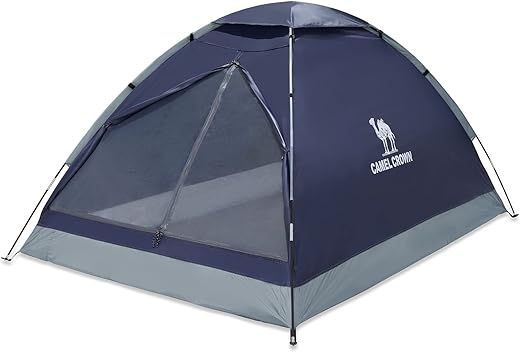
Alright, fellow adventurers! Whether you’re a seasoned camper or just someone who thought sleeping under the stars sounded cool until they realized it also meant sleeping on the ground, we’ve all wrestled with the age-old question: pop-up tents or traditional tents? Imagine the scene: you’ve just hiked to a stunning campsite, but then you’re faced with the ultimate test of patience—setting up your tent. Should you roll the dice on a pop-up that promises to have you pitching faster than you can say “s’mores,” or stick with the trusty old model that’s been around since before Instagram? Fear not! In this post, we’ll break down the pros and cons of each, helping you find the perfect shelter for your upcoming outdoor escapades—because let’s be honest, the last thing you need is a tent tantrum in the great outdoors!



What are Pop-up Tents?
Pop-up tents are the go-to solution for anyone who values their time (and sanity) over complicated setups. Picture this: the sun is shining, the festival vibes are unmatched, and you want to claim your spot without the hassle of wrestling with poles and canvas—this is where pop-up tents strut in like the heroes of the outdoor world!
Quick Setup and Takedown Features
One of the most appealing aspects of pop-up tents is their lightning-fast setup process. Forget about struggling with instructions that require an engineering degree just to pitch a tent. With pop-up tents, all you have to do is take it out of the bag, give it a little shake, and bam! You’re covered, literally.
- Setup Time: Most pop-up tents can be set up in under a minute. I mean, you could probably erect one faster than you could tell your buddy about your crazy weekend plans!
- Takedown Time: Takedown is just as simple; you can usually pack it back up in 30 seconds, making you look like an outdoor genius to all your fellow campers.
The Mechanism Behind the Magic
So how do these canvas wonders manage to pop up and down like they’re in some kind of magic show? It all comes down to their ingenious mechanism.
- Flexible Poles: Pop-up tents are typically designed with flexible poles that have built-in memory. These poles are either made from fiberglass or a durable aluminum alloy. When you take the tent out of its bag, they spring into an upright position, as if they’re stretching after a long nap.
- Integrated Hooks and Clips: Most models come with integrated hooks and clips to keep the tent stable once it’s popped up. This means you don’t have to worry about it collapsing mid-summer nap!
Popular Choices in Pop-up Tents
When it comes to actually buying a pop-up tent, you have some fantastic options that won’t leave you feeling like you’re sacrificing quality for convenience.
- The Coleman Instant Tent:
- Size: Sleeps 4-6 people.
- Setup Time: 60 seconds flat.
- Material: Weatherproof polyester fabric.
- What’s fun?: This tent has a spacious design that’s perfect for family outings and, yes, even sleepovers.
- The Pacific Pass 2 Person Tent:
- Size: Fits 2 people snugly! Ideal for that romantic weekend in the woods.
- Setup Time: Also pretty snappy at about 1 minute.
- Material: Lightweight and durable.
- Bonus: Comes with a rain cover, which is great because let’s be honest—nature can be unpredictable!
- The WolfWise Pop-up Tent:
- Size: 1-2 people.
- Setup Time: This little guy pops up in just 3 seconds. Yes, you read that right!
- Material: Polyester fabric that’s UV resistant.
- Why it’s great?: Excellent for day trips at the beach or music festivals. It’s like having your own private cabana!
Typical Use Cases for Pop-up Tents
Pop-up tents have a wide range of applications that make them your best friend in outdoor situations. Here are a few common use cases:
Festivals
Festivals are a pop-up tent’s natural habitat. You can set one up in seconds, providing a shady spot for you and your friends to take a breather from dancing like no one’s watching. Brands like Big Agnes even create specific models designed for festival vibes, featuring bright colors and lightweight materials for easy transport.
Short Camping Trips
Heading out for a weekend camping adventure? Pop-up tents simplify that process immensely. You can have your camp set up before your hot dog is done grilling. The CORE Instant Cabin Tent is a great option here, accommodating larger groups without making you play a game of Tetris just to pitch it.
Beach Days
Nothing says “relaxation” quite like chilling by the beach with a breezy pop-up tent to shield you from the sun. The Neso Tents are quite popular because they’re easy to transport and set up, making them perfect for those long sunbathing sessions (or stealthy napping periods).
Backyard Gatherings
Even if you’re just planning a simple backyard BBQ with friends, a pop-up tent can save the day if the weather decides to turn. The E-Z UP Instant Shelter series offers a variety of sizes and styles to suit your BBQ-themed needs, so you can keep the grill hot, even when the skies are not.
Key Benefits of Pop-up Tents
Here are some critical benefits of pop-up tents in a simple bullet-point format:
- Convenient and Quick: Set up and takedown in mere moments.
- Lightweight and Portable: Easy to carry for anyone.
- Versatile Usage: Ideal for festivals, camping, beach days, or even just a rainy BBQ.
- Variety of Sizes: From solo naps to group hangouts, there’s a size for everyone!
- Durable Materials: Most are made from water-resistant and UV-protective fabrics.
Whether you’re a seasoned camper or simply looking to enjoy a day at the park, the pop-up tent is here to offer you effortless convenience and stress-free outdoor experiences!
What are Traditional Tents?
When we think about camping, the image of a good ol’ traditional tent pops into our heads faster than you can say “s’mores.” Traditional tents have been the go-to shelter for adventurers and weekend warriors alike. But what exactly sets them apart? Let’s dive into the world of traditional tents, their construction, setup, and a few expert recommendations along the way!
Construction and Setup Methods
Fabric and Frame
Traditional tents are usually made of durable materials that can withstand the elements. Common fabrics include:
- Canvas: Heavy-duty and breathable, a canvas tent like the Kodiak Canvas Flex-Bow Tent is perfect for extended trips and can handle rain like a champion!
- Polyester: Often coated for waterproofing, like the Coleman WeatherMaster 6-Person Tent, these are lightweight and quick to set up.
- Nylon: Seen in backpacking tents, such as the MSR Hubba Hubba NX 2, this material is light and compact but can be a bit less durable.
As for the frame, traditional tents can be either:
- Freestanding: Easy to pitch anywhere, like the REI Co-op Half Dome SL 2+ Tent.
- Non-Freestanding: Requiring stakes to hold them down, such as the Big Agnes Copper Spur HV UL2, which is a pro at shedding wind.
Setup Methods
Setting up a traditional tent can range from a one-dude job to a group effort. Here’s how you typically roll with it:
- Toss out the footprint: Start by laying down the footprint or ground tarp. It’s like putting out a welcome mat for Mother Nature.
- Frame first: Assemble the frame (if needed). Many pop-up designs, like the Core Instant Cabin Tent, make this a cakewalk.
- Attach the fly: Don’t forget that rainfly! It’s your tent’s protective blanket against the elements.
- Stake it down: For stability, especially in windy conditions. Your tent should be more secure than your Wi-Fi password.
Types of Traditional Tents
Now that we have the basics down, let’s check out some of the common types of traditional tents that might tickle your fancy.
Dome Tents
Dome tents often look like the iconic camping design. They’re simple, stable, and great for most weather conditions.
- Recommended Product: The North Face Stormbreak 2
- Capacity: 2 people
- Weight: 5 lbs
- Weather Resistance: Solid rain and wind resistance
Cabin Tents
Cabin tents are like the luxury hotels of the camping world. They have a tall center height and usually come with a room separator.
- Recommended Product: Ozark Trail 10-Person Cabin Tent
- Capacity: 10 people
- Weight: 22 lbs (so maybe skip leg day before packing)
- Weather Resistance: Good, but hitting the “high rain” season may have you second-guessing.
Backpacking Tents
As the name implies, backpacking tents are lightweight and compact. They may feel like you’re sleeping in a burrito, but hey, it’s cozy.
- Recommended Product: Sea to Summit Telos TR2
- Capacity: 2 people
- Weight: 4.4 lbs
- Weather Resistance: Top-notch, even against unexpected downpours!
Pros and Cons of Using Traditional Tents
Just like choosing between pizza or tacos, there are pros and cons to using traditional tents. Let’s weigh them out!
Pros
- Durability: Most traditional tents are built to last. For instance, the Cabela’s Alaskan Guide® 6-Person Tent is famously robust, with a frame that can take a beating.
- Weather Resistance: Many traditional tents come equipped with rainflies and well-sealed seams, so you can camp without sporting a soggy bottom.
- Versatility: Whether you’re heading for a family outing or a solo wilderness retreat, there’s a tent out there for you.
Cons
- Weight: Some tents can come with a bit of heft. Cabin tents, for example, may require a team of oxen (or at least some strong friends) to carry.
- Setup Time: Depending on the model, some tents may take longer to set up, especially if you’re wrestling with poles like they’ve wronged you.
- Cost: A good traditional tent can cost more than your last two-month meal prep. Brands like Big Agnes and Nemo offer top-of-the-line options that may leave your wallet crying.
| Tent Type | Capacity | Weight | Weather Resistance | Typical Use |
|---|---|---|---|---|
| Dome Tent | 2-4 people | 5-7 lbs | Good | Weekend camping |
| Cabin Tent | 8-10 people | 15-25 lbs | Moderate | Family camping |
| Backpacking Tent | 1-2 people | 2-6 lbs | Excellent | Solo trips |
So there you have it! Traditional tents offer a variety of options and, once you’ve set them up, they provide a cozy home away from home. With the right model and setup, you can enjoy stargazing and ghost stories without getting rained on or eaten by mosquitoes. Happy camping!
Choosing the Right Shelter for Your Adventure
In conclusion, choosing between pop-up tents and traditional tents is like deciding between a speedy takeaway and a home-cooked meal—each has its perks and quirks! Pop-up tents score big on quick setup and portability, making them perfect for spontaneous camping trips or lazy campers who struggle with poles. On the flip side, traditional tents offer durability and weather resistance that pop-ups can only dream about, making them the go-to choice for serious adventurers. Ultimately, it all boils down to your camping style: Are you a laid-back weekend warrior or a rugged outdoorsy type ready to brave the elements? So, consider your needs, weigh the pros and cons, and get ready to make some epic memories under the stars—no matter which tent you choose! Happy camping!



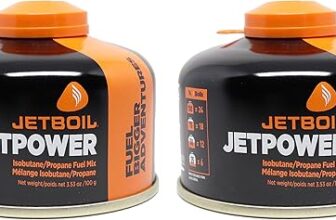
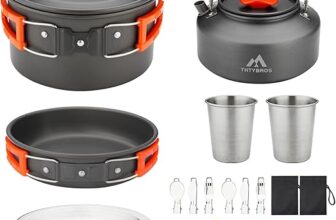
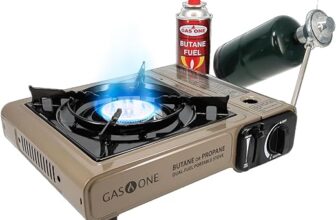
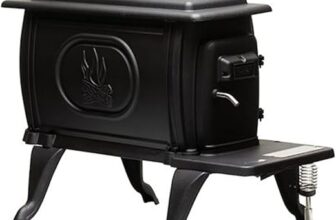


Can you recommend a good pop-up tent for families? We need something spacious but easy to set up!
Absolutely! The CORE Instant Cabin Tent is great for families. It has plenty of space and sets up in just a couple of minutes!
I once struggled with a traditional tent in the rain, and it was a nightmare! Pop-ups are definitely my go-to now. Anyone else had a similar experience?
Totally agree! Setting up a traditional tent in bad weather can be a hassle. Pop-ups definitely save the day in those situations!
Great to hear you love your Coleman Instant Tent! When choosing the right size, consider how many people will be using it and if you want extra space for gear. A little extra room can make a big difference in comfort!
I’ve been using a Coleman Instant Tent for years and love how quick it is to set up! Any tips for choosing the right size?
I think portable camping tents like the REI Co-op Flash Air are awesome for backpacking. Have you tried any specific brands?
I haven’t tried the Flash Air yet, but I’ve heard great things! They’re lightweight and packable, which is ideal for backpacking.
I feel like traditional tents provide better insulation for colder weather. Anyone disagree with that? Pop-ups can feel cold at night.
You’re right! Traditional tents often have better insulation, but it also depends on the materials used. Some pop-ups come with thermal linings, so it’s worth checking the specs.
Can you dive deeper into how the durability of pop-up tents compares to traditional ones? Like, what should we really look for?
I’d be happy to expand on that! When comparing durability, look for materials like ripstop nylon for pop-up tents and thicker fabrics for traditional tents. Also, check the waterproof ratings!
What about maintenance tips for both types? Like, how do you keep them in good shape?
Great question! For both types, always dry them before packing away, and store them in a cool, dry place. Regularly check for any wear and tear!
Could you write about camping hacks for first-timers? I think it would really help those new to the camping scene!
That’s a fantastic idea! I’ll definitely consider writing about camping hacks. It’s always good to have some tricks up your sleeve when starting out!